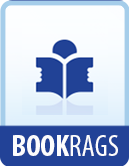|
This section contains 650 words (approx. 2 pages at 400 words per page) |

|
Milk and Honey Summary & Study Guide Description
Milk and Honey Summary & Study Guide includes comprehensive information and analysis to help you understand the book. This study guide contains the following sections:
This detailed literature summary also contains Quotes and a Free Quiz on Milk and Honey by Rupi Kaur.
The following version of this book was used to create this study guide: Kaur, Rupo. Milk and Honey. McMeel Publishing, 2015.
This collection of short poems is grouped into four sections: “the hurting”; “the loving”; “the breaking”; and “the healing”. For the most part, each page has only a single poem: there are a very few poems that spread over two pages. Several of the poems are accompanied by ink drawings, while several others have titles that come at the conclusion of the poem. In any quote, a "/" indicates the ending of a line. Lower case substitutions for what, according to grammatical rules, should be upper case (i.e. capitals) are reflective of the poem’s content – for example, the section titles above.
Part 1, “the hurting”, focuses on the speaker’s experience of being emotionally hurt within the context of male / female relationships. the overall tone and content of the poems suggests several things: that the speaker is female; that she was sexually abused at a young age by males in her family, including her father; and that she comes from a history in which women are, in general, mistreated. That history, the poems in Part 1 also suggest, includes both the history of her family, and her family’s ethno-cultural origins.
In Part 2, “the loving”, the focus continues to be on male / female relationships, but from a very different point of view. In this part, the speaker celebrates the positive values of being in a relationship with a loving, tender, sensitive male partner. There are echoes here of the past sexual and emotional suffering experienced in Part 1, echoes that give rise to explorations of confusion about various aspects of sexuality. Nevertheless, the overall sensibility of the poems in this section is celebratory, as the speaker realizes that it is possible for her to enjoy both sex and her body, and that there is reason and validity in that enjoyment.
The third part of the collection, “the breaking”, focuses on the speaker’s experiences in the aftermath of a relationship coming to an end. the collection never makes the point explicitly, but there is the clear implication that the relationship referred to in this part of the book is also the relationship referred to in Part 2. In this, the collection’s longest section, the primary focus is on experiences of pain, grief, and questioning. The attitude of the speaker throughout this section is ambivalent, in that there are explorations of both loss and longing – that is, of trying to self-convince that the relationship is over while, at the same time, continuing to believe that the love and intimacy that both partners in the relationship experienced can bring them back together.
In the collection’s fourth part, “the healing”, the emphasis is, as the section’s title suggests, on the process of healing and recovery from all the different sorts of breaking explored in Part 3 and, by extension / implication, those experienced in Part 1. While there are still references to experiences of pain and self-doubt, the primary focus is on taking steps towards an experience of self-value and self-worth. There is a certain shift in the language used by the poems in this section, with a strong sense of self-affirmation or self-nurturing about many of the poems, which at times seem to take on the form and style of slogans from self-help books. Also in this final section, there are clear references to the author self-identifying as the speaker: up to this point, there have been hints, or suggestions, but here there are clear and specific references to the autobiographical nature of the poetry. In this context, and looking at the other poems in the collection with hindsight, there emerges a very strong sense of a personal, lived experience of transformation, said transformation defining the collection’s core thematic intention, and also the intentions of many of its secondary themes.
Read more from the Study Guide
|
This section contains 650 words (approx. 2 pages at 400 words per page) |

|



